As visitation grows, Acadia National Park sees planning and fundraising as priorities
On any sunny summer day, sections of the 27-mile Park Loop Road — a highlight of Acadia National Park on Mount Desert Island — are jammed with concession buses, commercial motor coaches, RVs, the park's public transit system buses, cars, motorcycles, bicyclists and pedestrians.
Visitors are eager to experience vistas of the ocean and woods, stroll the granite slopes atop Cadillac Mountain, listen to the surf at Thunder Hole, swim at Sand Beach or enjoy tea and popovers at Jordan Pond House.
What they aren't excited about is traffic jams and safety hazards along this narrow, curvy road and at each one of these primary visitor stops.
The problem, here and elsewhere around the park, has accelerated in recent years, thanks to Acadia's growing popularity.
With a declining operating budget over the past few years, a substantial maintenance backlog and a transportation network that at times is overwhelmed, park administrators face challenges as they work to ensure a blend of positive experiences for visitors and protection of the resources.
“The biggest single challenge facing Acadia now is our popularity,” says Acadia Superintendent Sheridan Steele. “There are times and places when it is too crowded. Fortunately, it's not all the time. But it does happen, and that diminishes people's experience. It's a lot of people trying to enjoy the same space in different ways.”
Acadia benefits from 'staycation' trend
The National Park Service in general and Acadia, in particular, have been in something of an ascendancy in recent years. The recession prompted many people to take vacations within driving distance of their homes, and Acadia is within reach of huge population centers in the Northeast. The cruise ship industry has grown in Bar Harbor, where passengers hop on buses for excursions into the park. Acadia also was featured in a segment in the 2009 Ken Burns' documentary series about the park service, “The National Parks: America's Best Idea.”
A year later, a visit by President Obama and his family generated interest in the park from around the world. More recently, it was named “America's Favorite Place” by ABC's “Good Morning America,” and it's regularly featured on the “top 10” lists. Acadia is the park service's ninth most-visited park, yet in size, at 47,000 acres, barely makes the top 50.
More attention is doubtless on its way in 2016, when both Acadia and the National Park Service will both celebrate 100-year anniversaries.
Last year, Acadia had 2.56 million visitors, making 2014 one of the park's top years and reflecting a nationwide trend, with a record-breaking 292.8 million national park visits in 2014, rebounding from a 2013 decline that included a 16-day government shutdown and many park closures for repairs after Superstorm Sandy hit the Northeast in late 2012, according to a new National Park Service visitor spending report. So far this year, the park is on pace to exceed last year's visitor number.
“Memorial Day set a record in terms of our entrance pass sales, so it's potentially a very busy season,” says John Kelly, Acadia's park planner. “That might be coming about because of the publicity the park has received. The chambers and the state have been out there promoting the park, too.”
With visits on the rise, Kelly and Acadia officials are drafting a transportation plan to alleviate traffic problems. A plan, which is expected to take three years to be completed, is aimed at creating a safe and efficient transportation system throughout the park.
Traffic is not a new issue. Concerns were raised in the park's 1992 general management plan. From that emerged a public-private partnership that created the Island Explorer, a fare-free, seasonal bus system that runs through Acadia and surrounding communities as a means to relieve traffic congestion and air pollution. The system was immediately popular. Carrying almost 5.5 million passengers to date, it's estimated the system has eliminated more than 2 million private vehicle trips.
But increased visitation has posed strains, as seen in 2014.
“It was a tipping year, when we broke a lot of our numbers,” Kelly says. “In previous years, the high-ridership days were in the 8,000s, and those only happened in the first two weeks of August. Suddenly, we had two 9,000-plus riders per day in August and an 8,000-plus day in July.”
Downeast Transportation Inc., which has the contract to run Island Explorer, this year reconfigured schedules to ensure following buses quickly pick up overflow passengers.
Traffic concerns
Despite its popularity, the Island Explorer only nicked the transportation dilemma. Certain portions of Acadia are overwhelmed by vehicle traffic and crowds, causing safety and resource-protection concerns.
A survey in August 2014, conducted over a week, found that 22 of 24 designated parking areas at the Hulls Cove Visitor Center and along the Park Loop Road reached capacity, some for as much as six hours a day. During peak hours, as many as 500 cars are parked informally along roadsides, which exceeds the entire parking lot capacity along the Park Loop Road by 40%.
The road to the top of Cadillac can be hazardous. A 2013 engineering study determined it is impossible for the largest vehicles, such as buses and RVs, to stay completely in their lane when negotiating the road's three hairpin turns. From 1989 to 2000, 29 accidents along Cadillac Mountain Road and in the Cadillac Mountain parking lots involved large vehicles.
“It's narrow, there are no shoulders, and there's no bike lane,” says Steele. “We have more and more cyclists each year going up and, when they do, they go slowly. That causes traffic to want to pass them, which means they have to go left of center to do that and the sight distances are poor. Sometimes there are big buses on the road. All of that, in a narrow space, means there's opportunity for conflict.”
The cruise ship industry adds to the situation. The park has seen a 350% increase in cruise ship passenger visitation since 2000; there can be as many as 5,500 cruise ship passengers a day. Currently, the park is keeping tabs on a proposal in Bar Harbor to convert a former ferry terminal for additional cruise ship berths, potentially resulting in more excursions into the park. At the same time, the terminal could be developed into another transportation hub.
The transportation plan will fold in development issues related to the Acadia Gateway Center and the Schoodic Education and Research Center, new park-related projects that were fast-tracked in 2009 by about $13 million from the American Recovery and Reinvestment Act. Acadia Gateway's first-phase bus maintenance facility was completed, but a visitor center and transportation hub remain on the drawing board. SERC is up and running, but with this summer's opening of a nearby campground, Acadia plans to proactively examine ways to prevent issues with traffic that are expected to increase in this quieter area of the park.
In the meantime, record visitation has been good for surrounding communities. In 2014, Acadia's visitors spent $221 million on amenities and essential services such as lodging, food and gas, supporting an estimated 3,486 jobs and having a total economic benefit of $271 million. Visitor spending was split among lodging (30.6%), food and beverages (20.3%), gas and oil (11.9%), admissions and fees (10.2%) and souvenirs and other expenses (9.9%), according to the park service.
But high visitation doesn't mean high funding levels, and across the park service, there is an estimated $11.5 billion in deferred maintenance — much of it roads and bridges.
Acadia's operations budget, which is funded by Congress, has been unable to keep up with needs, resulting in personnel, maintenance and construction cutbacks.
On the surface, that may be tricky for casual observers to wrap their head around. Acadia's roads are in excellent condition, thanks to Federal Lands Transportation Program and gas-tax money that come to the park independent of the operating budget. The park's iconic carriage roads, built in the early 1900s, and hiking trails are also well-funded, through endowments.
“The public sees fresh pavement on the roads, and they think everything's great at Acadia,” says Steele. “But it's the operating budget that's under the most stress, and you don't see that.”
Acadia receives money from four major sources. Two pots come via congressional appropriation for operations and for project funds awarded by competition on a one-year basis. Other major sources include private donations and fees from commercial users, such as concessions, and from visitors.
For fiscal year 2015, Acadia received $7.985 million for operations. That sum, covering about 49% of Acadia's budget, represents an increase of $903,000 over the FY 2014 appropriation of $7.082 million.
In FY 2014, project funds of $4.727 million accounted for 29% of the budget, fees of $2.137 million were 13%, and endowment funds and donations were $1.435 million, or 9%. Entrance fees and endowment funds tend to remain stable, says Kelly.
“Fees are based on visitation, so we really don't know what we've got until we've got it, but the numbers are usually within a certain percentile from year to year,” Kelly says. “A big swing would be a visitation difference of 10% to 13%, but we don't usually see that. We see 3% to 5% fluctuation one way or the other in visitation.”
Acadia makes up for its underfunded budget by prioritizing personnel hires, selectively deferring maintenance projects, and putting off certain construction projects.
More than a decade ago, the park eliminated some staff positions through attrition, focusing on front-line public service.
“Law enforcement, emergency medical services, search and rescue, fire protection — those are all first in line,” says Kelly.
Staffing has remained stable in recent years. For now, the park has 70 permanent full-time equivalents, or about 90 individuals. Seasonal staff consists of about 60 FTE, or about 150 individuals.
But that still represents a deficit on the permanent, year-round staff of approximately 10 key personnel. And that could have real consequences for the park, Steele says.
“We keep trimming around the edges,” Steele says. “We've left a number of permanent positions vacant so we can protect the seasonal hiring, because that's where most of the services are seen by the public. Visitor center hours, for example, are pretty much back to what we would consider a normal year. But we've sacrificed a number of permanent positions in order to do that. I guess you would say that's okay in the short term, but it's not okay in the long term.”
For example, the staff once included a botanist, considered key for resource protection. “Exotic plants, for example, are spreading in the park, and we need to control it. We also have diseased trees. We're working on it, but we don't have the full-time focus that we would if we had a botanist on staff,” Steele says.
Deferred maintenance projects in Acadia amount to $57.6 million, which includes approximately $10.2 million for trails, $19.2 million for paved roads and associated bridges, $8.4 million for buildings, $1.1 million for employee housing, $165,000 for campgrounds, $1.9 million for waste waters systems, $850,000 for water systems, $11.2 million for unpaved roads and $4.4 million for other needs.
Nationally, the estimate for deferred maintenance continues to grow, from $11.3 billion in FY 2013 to the current $11.5 billion. Aging facilities and scarce resources have combined with a growing number of visitors. To hold the deferred maintenance backlog steady nationwide, it would take approximately $820 million a year, while for FY 2015 there is about $470 million available, leaving a funding gap of $350 million. Additional revenue generated by a new entrance fee schedule, implemented this summer, will go toward the backlog. The fee increases are small; for example, the seven-day vehicle pass went from $20 to $25.
Today, some of the operations money cut in previous years has been restored. But in terms of net operating dollars, the FY 2015 appropriation, although an increase over FY 2014, still leaves the park below where it was several years ago, says Steele. With inflation, the real value has gone down in recent years.
“This situation is made much worse by increases in visitation and the growing length of the busiest season,” Steele says. “In order to enter the next century of Acadia's existence, we need to address the problems of dealing with large numbers of people, six months of the year. It's becoming more and more of a challenge as our budget shrinks. But Acadia would be in even more difficult circumstances if it were not for volunteers and private donors. We get about $1 million a year in private funding. And last year, we had nearly 4,000 individual volunteers helping with public information, maintenance, resources management, emergency response and administration. It is an inspiration to see these folks of all ages come in large numbers to help us manage the park and serve the public.”
Read more
Acadia National Park to kick-off centennial


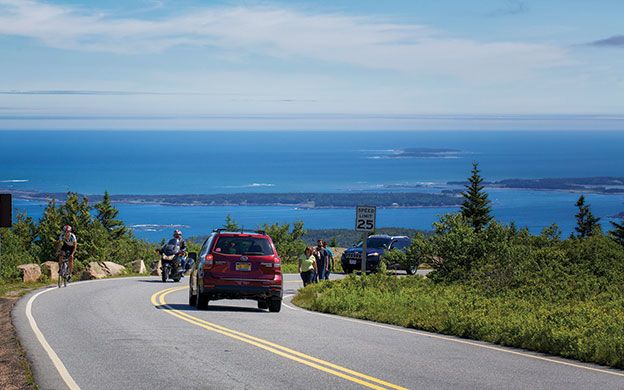
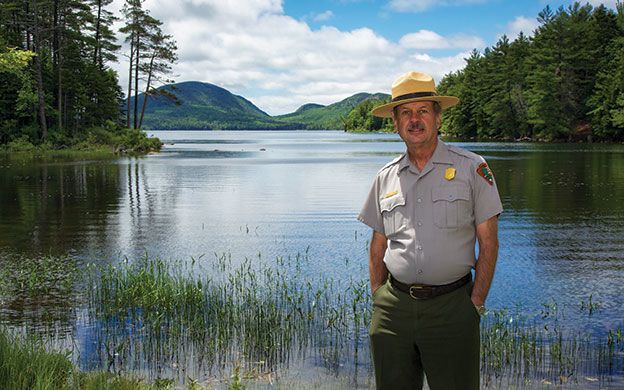
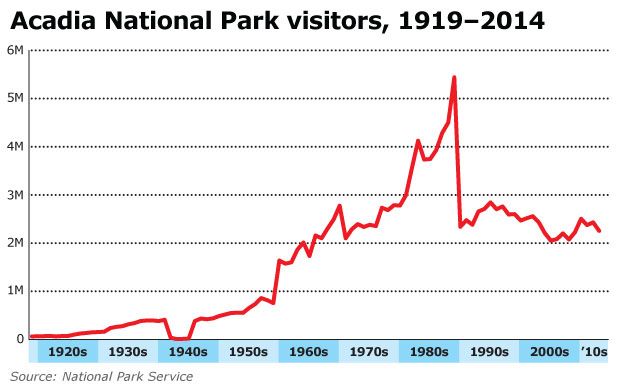

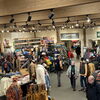
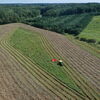







Comments